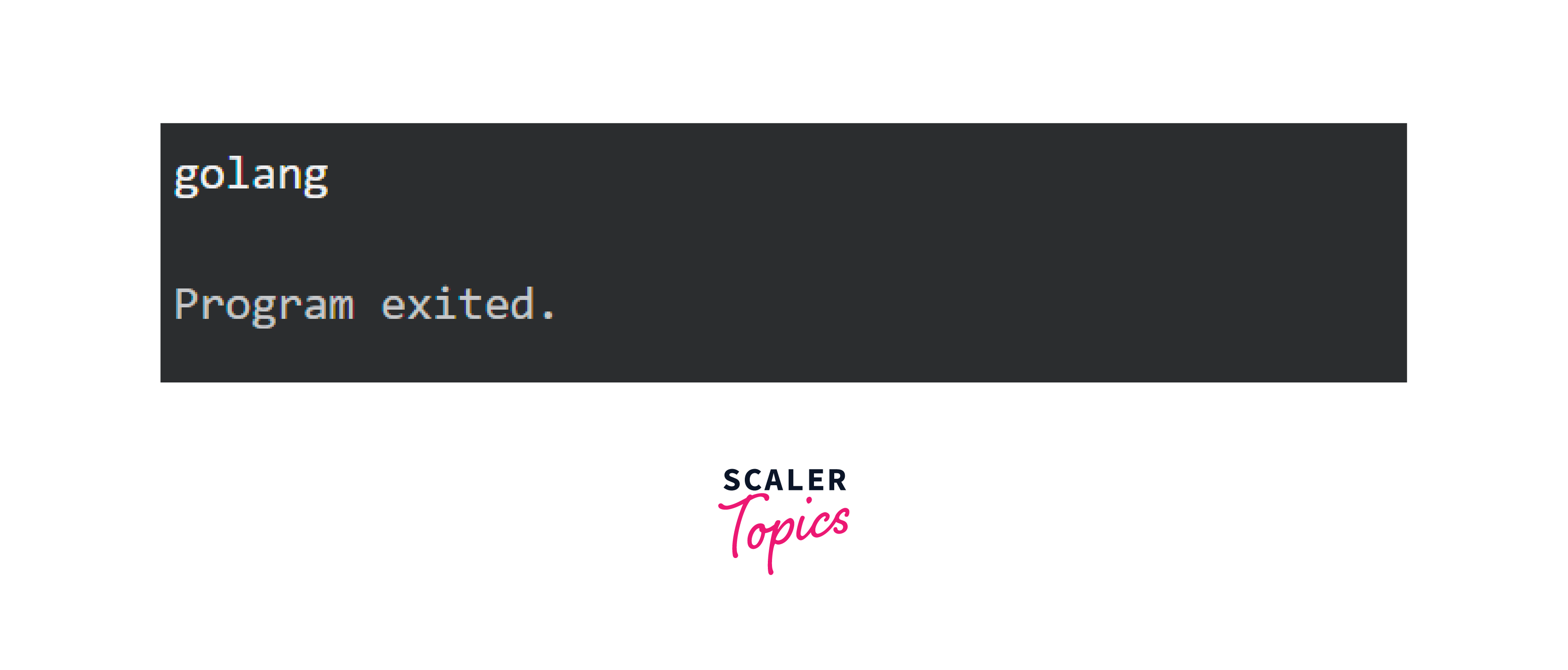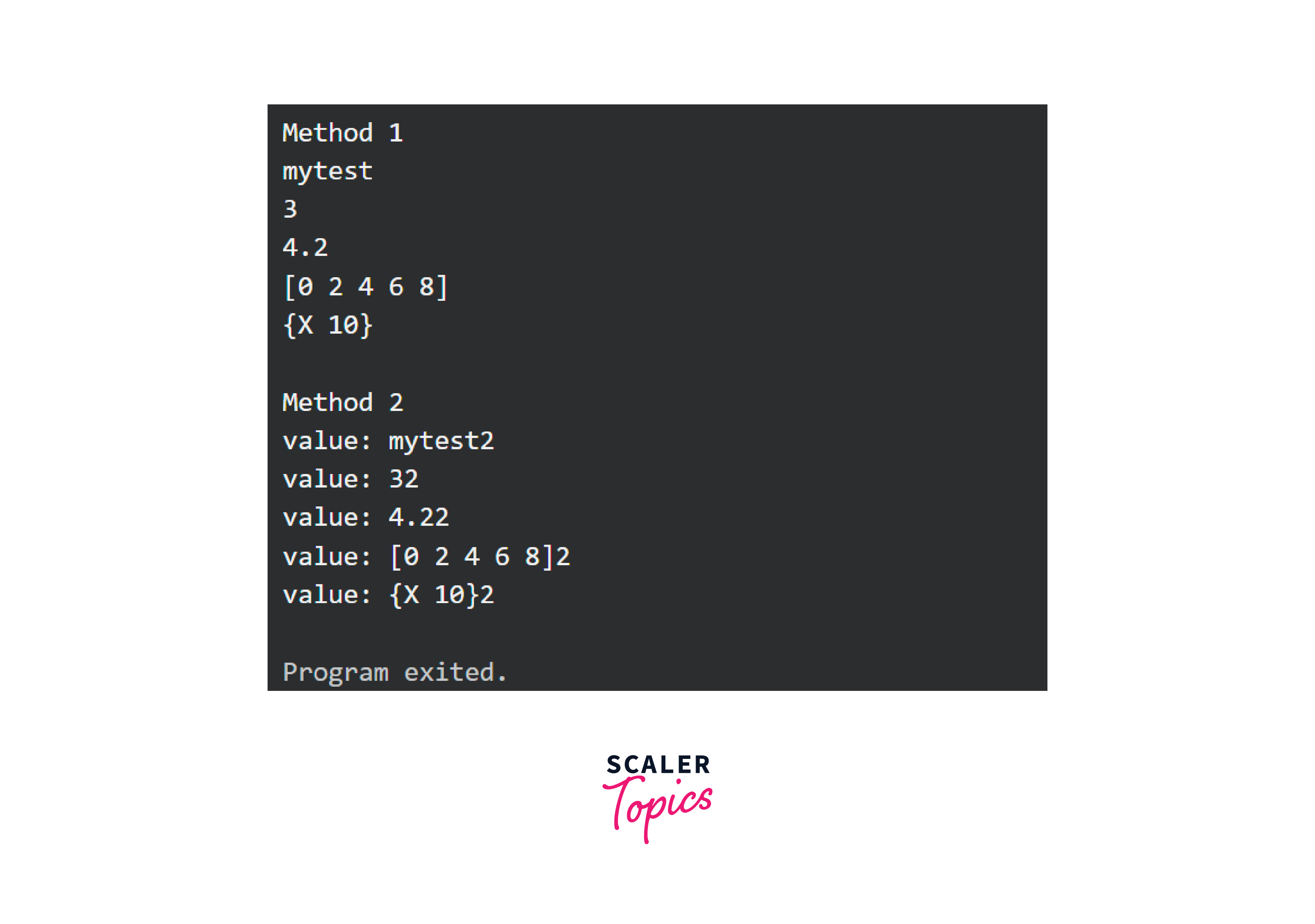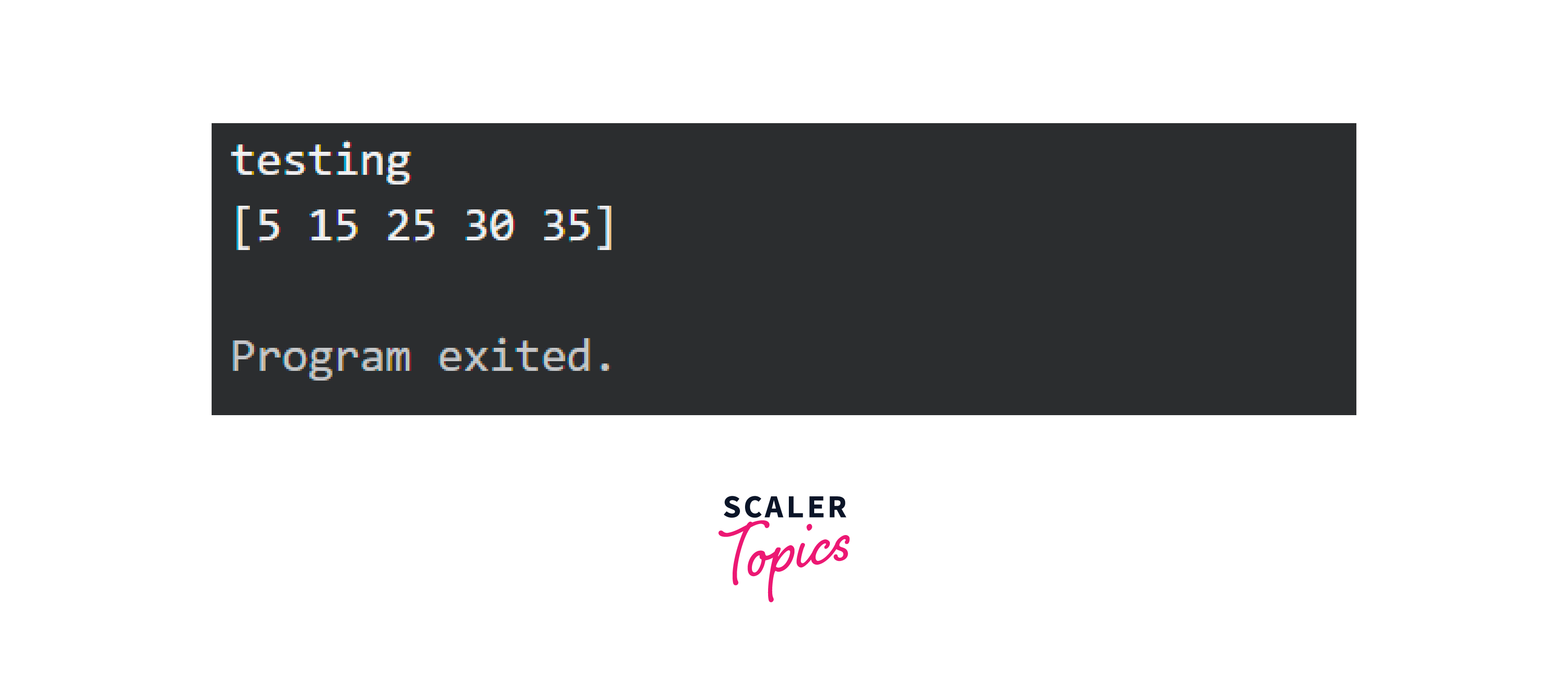Golang Interface to String
Overview
An interface in Go is a crucial component that enables us to define the behavior without referring to the actual type. There may be instances when working with interfaces that require us to translate an interface value into a string representation. Understanding how to convert the interfaces to strings is a valuable skill, whether it's for printing, logging, or other uses. Given that Go offers many methods to convert an interface to a string, this article analyses the various approaches and includes examples for each one.
There, we use the type assertion method, often known as type casting, along with the "Sprint" and "Sprintf" methods from the "fmt" package. The "for" loop function will also be used to convert the interface to string golang.
Example 1: Golang Interface to String Using the “.(string)” Method
By using a type assertion, an interface can be substantially transformed into a string. An interface can be converted to a string by using the ".(string)" method. The following example makes it easier to convert an interface to a string.
We first import the "fmt" package, which provides the structured I/O methods, to get things started. We then declare a variable of type "interface" called "MyInterface". The interface can carry any value because it is an empty interface.
The "Golang" string is then assigned to the "MyInterface" variable. The value that is saved in "MyInterface" is then assigned to the "myStr" variable after we execute a type assertion confirming the value is of the type "string". If the value stored in "MyInterface" is not of the "string" type, a runtime error occurs. Finally, we use the Println method from the "fmt" package to generate the value of "myStr".
The output represents the “golang” since “myStr” contains the string value that is asserted from “MyInterface”:

Example 2: Golang Interface to String Using the Iteration Method via the “For” Loop
The length of the interface can alternatively be built as an empty slice, and each value can then be converted into a string using a "for" loop. This will become easier with the help of the following source code.
In this case, the slice "NewInterface" is declared and initialized with various values representing different types. A text ("golang"), an integer (1), a floating-point number (2.5), a second floating-point number (9.82), a slice of integers ([]int6, 7), and a structure containing integer fields (struct A, B int 8, 9) are among the kinds we include. Given that it is specified as a slice of empty interfaces ([]interface), the "NewInterface" slice is capable of holding values of any type. The type of the "NewInterface" variable is printed using the "%T" format specifier and fmt.Printf().
Next, we use the make() function to create a fresh slice called emp_slice. It has the same length as "NewInterface" when it is formed. To iterate over the "NewInterface" element, we use the for-range loop. To transform each "v" element to its string representation and assign it to the relevant index of the emp_slice, we set the fmt.Sprint() method inside the loop. Keep in mind that the fmt.Printf() function prints the type of the emp_slice using the "%T" format specifier. Additionally, the slice elements are printed in quoted form using the "%q" format specifier.
The output shown below converts the various type values inside the provided interface to string golang:

Example 3: Interface to string golang Using the type switch Method
In Go (Golang), you can convert an interface to a string using a type switch method. An interface in Go can hold values of different types, and to convert it to a string, you need to check the underlying type of the interface and then perform the conversion accordingly. Here's an example of how you can do this:
Output:
In this example:
- The interfaceToString function takes an empty interface (interface{}) as its argument.
- Inside the function, a type switch is used to check the underlying type of the interface value.
- If the underlying type is a string, it is directly returned as a string.
- If the underlying type is an integer, it is converted to a string using fmt.Sprintf.
- If the underlying type is not string or int (in this case, a float64), it returns "Unsupported Type."
You can extend the interfaceToString function to handle other types as needed by adding more cases to the type switch statement.
Example 4: Interface to string golang Using the Sprint() Method
Additionally, we have more methods for transforming the values of various types that are kept in an interface slice to strings. The technique converts each value separately using "Sprint". Another option for formatting a string with the values and substitutes is to use the fmt.Sprint() method. We can convert the interface to a string by sending it to fmt.Sprintf() with the "%v" placeholder. This function can be best understood by the example below:
Here, we define a slice of empty interfaces ([]interface) as a variable called "testVal". Values of many types, including string, integer, float, slice, and struct, are contained in this slice. The objective is to show how these values can be converted to strings. Then, using the "range" keyword, we define the main() function, which calls the "for" loop range to iterate over each member in the "testVal" slice. The iteration's current element is represented by the loop variable "v".
The Sprint() function from the "fmt" package is then used to convert the currently selected element of "v" into a string. Any value can be converted to a string representation using the "Sprint" function.
The output shown below shows the specified interface's string representation:

Example 5: Golang Interface to String Using the Sprintf() Method
Although the fmt.Sprintf() function in Go can be used to convert an interface into a string, we can achieve the same result by formatting the interface value with a "%v" placeholder. For that function, a source code has been defined.
An empty interface type (interface) is declared for an "I1" variable in this instance. The string value "testing" is assigned to the "I1" interface. The value of "I1" is then changed to a string using the fmt.Sprintf() function. According to the format specifier "%v" inside the function, the default format should be used. The result string is stored in the "resultStr" variable. The variable is then created once more with the name "I2" and is an empty interface type. This time, a slice of integers ([]int5, 15, 25, 30, 35) is assigned. Once more, the value of "I2" is transformed into a string representation using the fmt.Sprintf() function.
The output shows how the value's string representation inside the interface was transformed:

Conclusion
- Working with dynamic and adaptable Go code often requires converting the interface to string Golang. We looked at various methods, including type assertion and iterative "for" loops, to convert an interface to a string. Moreover, the “Sprint” and “Sprintf” methods were also used to do this conversion. We can efficiently convert the Go interfaces to strings as required by understanding these methods and their suitable use cases.
